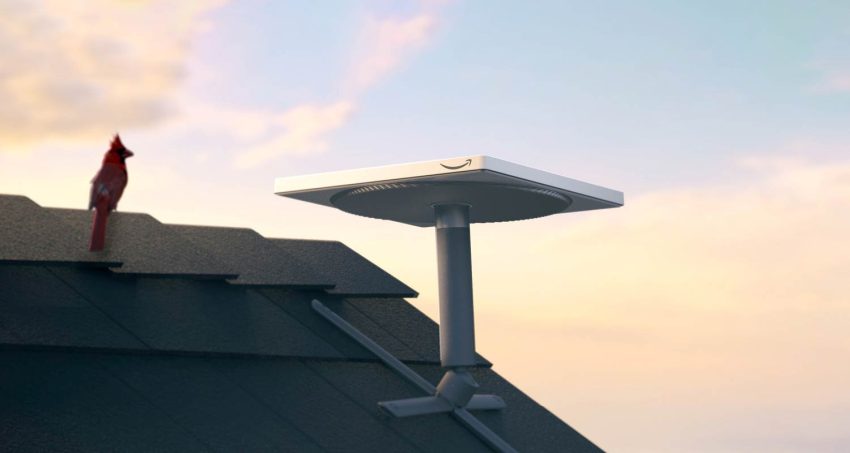Regulatory hurdles in the way of Starlink’s pursuit of a local operating licence could see the SpaceX subsidiary losing the first-mover advantage it has enjoyed in most markets. This as competitor, Amazon’s Project Kuiper, looks to enter the local market.
Kuiper in April began launching its satellites into orbit and plans to begin beta testing in the coming months, with a commercial roll-out expected to begin in 2026.
TechCentral understands from well-placed sources that Amazon representatives have been meeting with local telecommunications operators and internet service providers ahead of the planned launch. The publication has reached out to Kuiper for further comment.
Starlink is miles ahead operationally but is likely to hold off from applying for a local licence until the licensing regime, which currently requires local licensees to sell 30% of their equity to “historically disadvantaged persons”, is amended, a process that could take up to two years – or even longer.
“Starlink has a lot of hype around it and Kuiper is not as well known in South Africa, so Amazon would have to do quite a lot of marketing to build interest,” said Jens Langenhorst, founder of Specialised RF, a consultancy for wireless, microwave and satellite networks.
“It is not yet clear what Kuiper’s strategy is, but they are in a position to give Starlink some real competition.”
Despite being available in 18 African countries, including neighbouring Botswana, Zimbabwe, Eswatini and Lesotho, Starlink’s path to licensing in South Africa has been delayed by communications regulator Icasa’s licensing rules, which require the 30% equity stake in the hands of local black investors.
Draft policy direction
South African-born Elon Musk, who controls SpaceX, has been vocal in his distaste for South Africa’s empowerment laws, even going as far as saying that the reason Starlink does not have an operating licence in South Africa is because “I am not black”.
Communications minister Solly Malatsi in May issued a draft policy direction to communications regulator Icasa in which he asked the regulator to explore how equity equivalents – already used extensively in other sectors of the economy – could be introduced in ICT sector licensing.
Read: Karoo collision: Starlink vs science in South African skies
In June, Starlink came out in favour of the directive, affirming its intent to apply for an operating licence under the proposed new regime. “Starlink has been interested in providing high-speed internet to South Africa since we first deployed our constellation and began the service.
“The only reason Starlink is not in South Africa today is because Icasa’s licence regulations stipulate that all licence holders must be 30% locally owned. As you are aware, Starlink is a global system, and we must retain sole ownership of all our subsidiaries for operational purposes,” the company said previously.
However, the journey to amending regulations is no speedy matter. Speaking at the Wapaloza conference hosted by the Wireless Access Providers’ Association in June, Dominic Cull, regulator at communications sector legal advisory firm Ellipsis, said historical precedent suggests making changes to policy, law and regulations in South Africa is multi-year process.
“Optimistically – and there is no historical precedent justifying optimism in this case – it will be another 18 months to two years before Icasa is ready with a regulatory framework on EEIPs (equity equivalence investment programmes). So, Starlink’s application, if they are still interested, will realistically come towards the end of 2027,” said Cull.
This means Kuiper could launch around the same time as Starlink – and presumably would be keen to take advantage of the planned EEIP. The possibility that Kuiper could even launch ahead of Starlink is not to be ignored, either. According to Langenhorst, South Africans will benefit from a more competitive satellite broadband market once both companies offer their services here.
“If they launch at the same time, there will definitely be a lot more price competitiveness in the market,” he said.
Starlink and Kuiper have taken slightly different routes in their approach to solving the technical problems of providing internet services from space. The first major difference is in the number of satellites each company uses. Starlink has already deployed more than 8 000 while Kuiper plans to have only around 3 200.
The reason for Kuiper’s smaller constellation is related to another difference between the two operators: Starlink satellites orbit Earth at an altitude of 550km above the planet’s surface; Kuiper’s satellites, on the other hand, are higher – between 590km and 650km, meaning fewer of them are needed for global coverage.
According to Langenhorst, the main reason Starlink has opted to place its satellites closer to Earth is because of its long-term bet that direct-to-mobile capability – although still in its infancy – will be an important technology in the years to come.
Starlink vs Kuiper
Starlink satellites being closer to the planet means its internet service has lower latency compared to Kuiper’s. However, Kuiper’s satellites are larger than Starlink’s – the extra room allows for larger components that give Kuiper’s service higher bandwidth.
The difference is evident in the speeds each service offers. Starlink’s standard terminal offers speeds between 40Mbit/s and 250Mbit/s, whereas Kuiper is aiming for around 400Mbit/s.
Read: The satellite broadband operators taking on Starlink
“Starlink has first-mover advantage but there are advantages to being second. I anticipate Kuiper will have superior technology simply because they have had longer to develop it, they have looked at some of the mistakes Starlink has made and they have hired some really smart people, some of whom worked at Starlink,” Langenhorst said. – © 2025 NewsCentral Media
Get breaking news from TechCentral on WhatsApp. Sign up here.
Don’t miss:
Malatsi insists BEE directive is not a shortcut for Starlink
